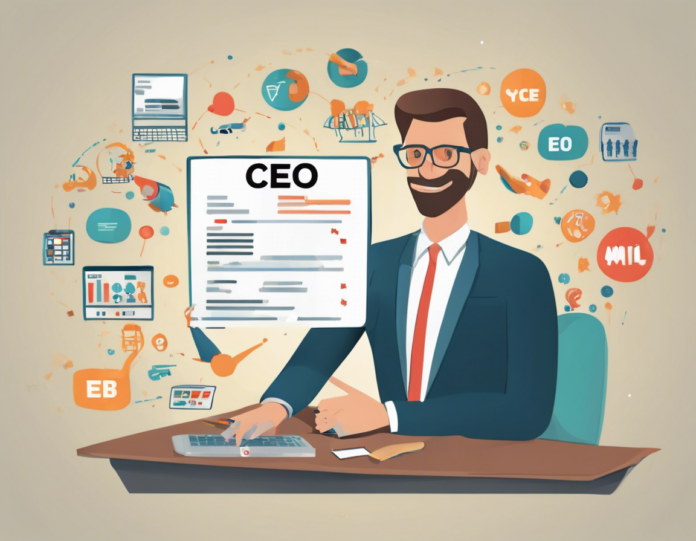If you’ve ever come across the term CEO in the business world, you might have wondered what it stands for and what exactly a Chief Executive Officer does. A CEO is a significant role in a company, typically the highest-ranking executive responsible for making major corporate decisions, managing the overall operations, and ensuring the organization’s success. In this blog post, we will delve into the details of the CEO Full Form and provide a comprehensive explanation of the role of a Chief Executive Officer.
What Does CEO Stand For?
CEO is an acronym for Chief Executive Officer. The word “chief” denotes the highest-ranking person in an organization, “executive” refers to the individual with decision-making powers, and “officer” reflects the official capacity of the role within the company’s structure.
The Role of a CEO
Responsibilities of a CEO
- Setting the Company’s Direction: The CEO establishes and communicates the company’s vision, mission, and overall direction.
- Decision Making: As the top executive, the Chief Executive Officer makes key decisions that impact the organization’s present and future.
- Strategic Planning: The CEO develops strategies to achieve the company’s goals and ensures the resources are allocated effectively.
- Leadership: Providing leadership to the management team, employees, and stakeholders is a crucial aspect of the CEO‘s role.
- Corporate Governance: The CEO ensures the company operates within legal and ethical boundaries and follows good corporate governance practices.
- Representing the Company: The Chief Executive Officer serves as the face of the company, representing it to external stakeholders such as investors, media, and the public.
- Performance Monitoring: Monitoring the company’s performance against goals and objectives and taking corrective actions when needed.
Qualities of a Successful CEO
Visionary Leadership
A successful CEO should have a clear vision for the company’s future and the ability to inspire and lead others towards that vision.
Strategic Thinker
Being able to think strategically and devise plans that drive the company towards its objectives is a key trait for a Chief Executive Officer.
Communication Skills
Effective communication is crucial for a CEO to articulate the company’s vision, motivate employees, and build relationships with stakeholders.
Decision-Making Skills
Quick and effective decision-making is essential for a CEO to navigate the complexities of the business world and seize opportunities.
CEO vs. Founder
It’s important to note that not all CEOs are founders of the companies they lead. While some businesses are founded and led by the same individual, others bring in professional executives to serve as CEO. Founders typically have a deep understanding and emotional investment in the company, whereas a professional CEO might bring a wealth of experience and expertise from other organizations.
FAQs (Frequently Asked Questions) About CEOs:
- What is the CEO’s relationship with the Board of Directors?
-
The CEO typically reports to the Board of Directors and is accountable for the company’s performance.
-
How is a CEO different from a COO (Chief Operating Officer)?
-
While the CEO focuses on the big-picture strategic decisions and external representation of the company, the COO is more involved in day-to-day operations and internal management.
-
Can a CEO be fired by the Board of Directors?
-
Yes, the Board of Directors has the authority to hire and fire the CEO if they believe a change in leadership is necessary for the company’s success.
-
What is the typical career path to becoming a CEO?
-
There is no set path to becoming a CEO, but many have extensive experience in leadership roles, a track record of success, and often an advanced degree such as an MBA.
-
How does a CEO impact company culture?
- The CEO plays a significant role in shaping company culture through their actions, decisions, and communication style, setting the tone for the organization as a whole.
In conclusion, a CEO holds a pivotal position in an organization, driving its success through visionary leadership, strategic decision-making, and effective communication. Understanding the role and responsibilities of a Chief Executive Officer can provide valuable insights into the dynamics of corporate leadership and the factors that contribute to a company’s growth and sustainability.
